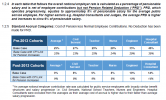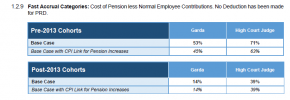Thank you. That's a very interesting figure. I was thinking it must be something higher than the % contribution public sector employees themselves pay in themselves.
Any idea where you might have seen the 15% figure? Would love to dig into analysis of this!
Please see the attached analysis of PS pensions.



